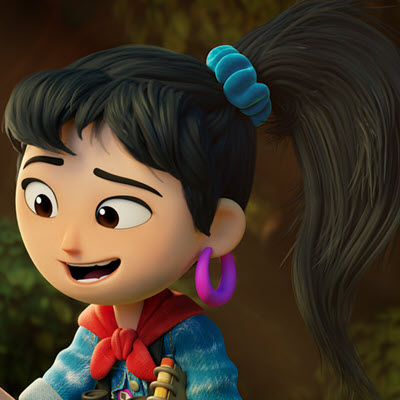Maths in animation and design
Wondering where maths could take you? How about working on blockbuster animations, like Disney’s Frozen.
If you dream of a career in design or animation, you might think visual arts is the most important secondary school elective, and you may even be considering dropping maths altogether.
Because maths and the world of graphic art don’t have much in common, right?
Well, if that’s your assumption then you might want to … 'Let it go'.

Meet Alexey Stomakhin. His study pathway was 100 per cent maths – a bachelor degree in applied maths and physics, followed by a masters in applied maths and then a PhD in applied and computational maths.
With qualifications like that under his belt, you might think Alexey is now working in the world of finance, or maybe as an academic. Instead, he has forged an impressive career path in the world of animation. A scroll through Alexey’s CV shows several years in engineering roles at Walt Disney Animation Studios, where he pioneered the technique used to simulate realistic looking snow in the movie Frozen and was the lead developer behind the software used to make water look realistic in Moana.
Equations as art
'The quality of animation has come a long way in the 21st century, and so the job of an animator has transformed,' says Alexey.
‘Think about a huge waterfall with all the tiny droplets it is composed of, or an explosion with billowing smoke and fire sparks. Plus modern animated faces, hair and cloth are all highly detailed.'
‘This complexity is something an artist, even a very skilled one, can no longer achieve drawing by hand, manually painting every frame of a movie, as it was done in the days of traditional 2D animation.

‘However, most of it can be described using the laws of physics. One can write down equations describing a flow of water, a chemical reaction in fire, deformation of skin, or cloth, or hair, even the scattering of light. Maths is the main tool for understanding, interpreting and solving those equations to achieve physically plausible motions of characters and effects of nature.’
Maths is where the best visual effects STEM from
Alexey says that differential equations (i.e. calculus) is a pretty crucial area of maths for simulating the physical world in animation, as is numerical analysis and linear algebra – and it isn’t just the M in STEM that is valuable for a career in animation.
‘Most of the simulation research is often interdisciplinary, so experience with physics and mechanical engineering, in particular continuum mechanics, proves quite handy as well,’ Alexey says.
‘The knowledge of computer science is equally important, as you want the algorithms you develop to execute efficiently to be able to make movies with them in time.’
Alexey is now employed as the principal researcher at New Zealand visual effects company, Weta Digital, which has in the past won Academy Awards for Best Visual Effects in some big-hit movies, including The Lord of the Rings, King Kong, Avatar and The Jungle Book.
While maths makes a pretty great foundation for a career in the world of animation or design, Alexey stresses that you don’t need to be a maths genius or top of your class to pursue a career in animation. There is a whole spectrum of jobs in the industry, some more technical than others.
What's more important is that you are passionate about what you do and do a lot of work. It all pays off in the end.